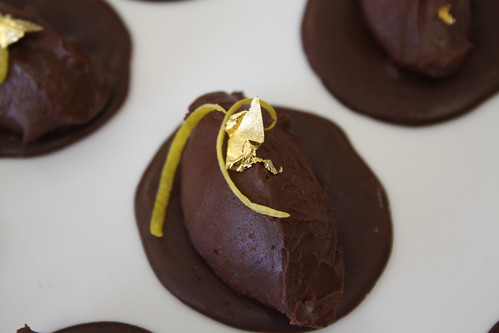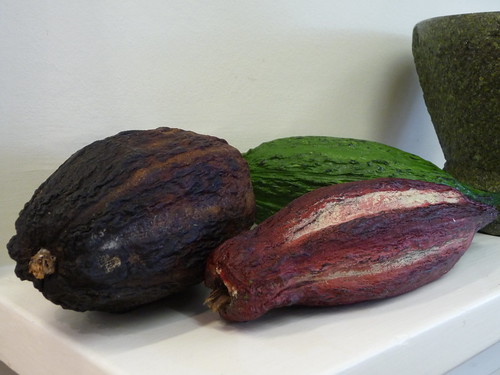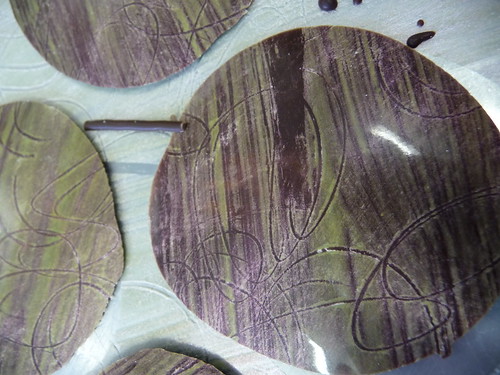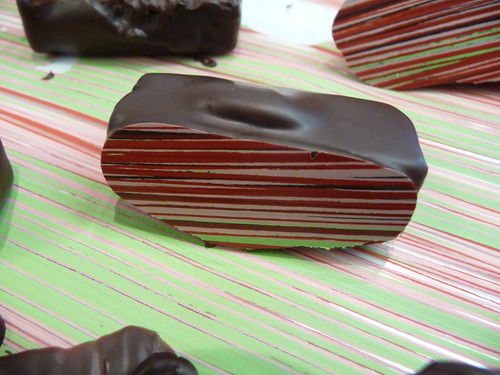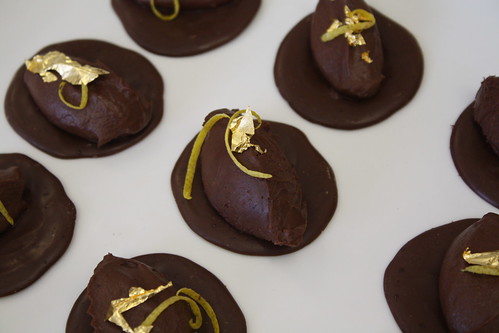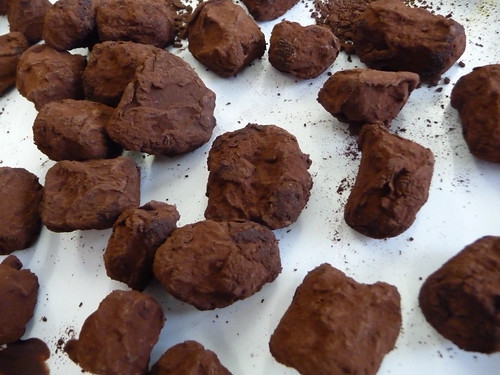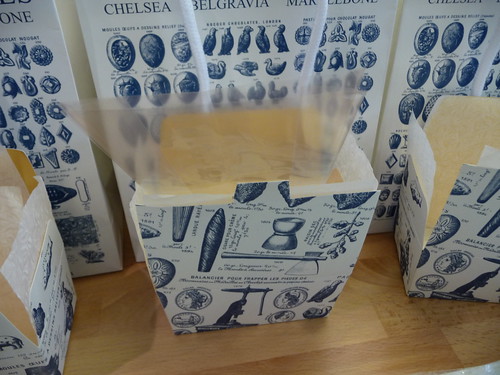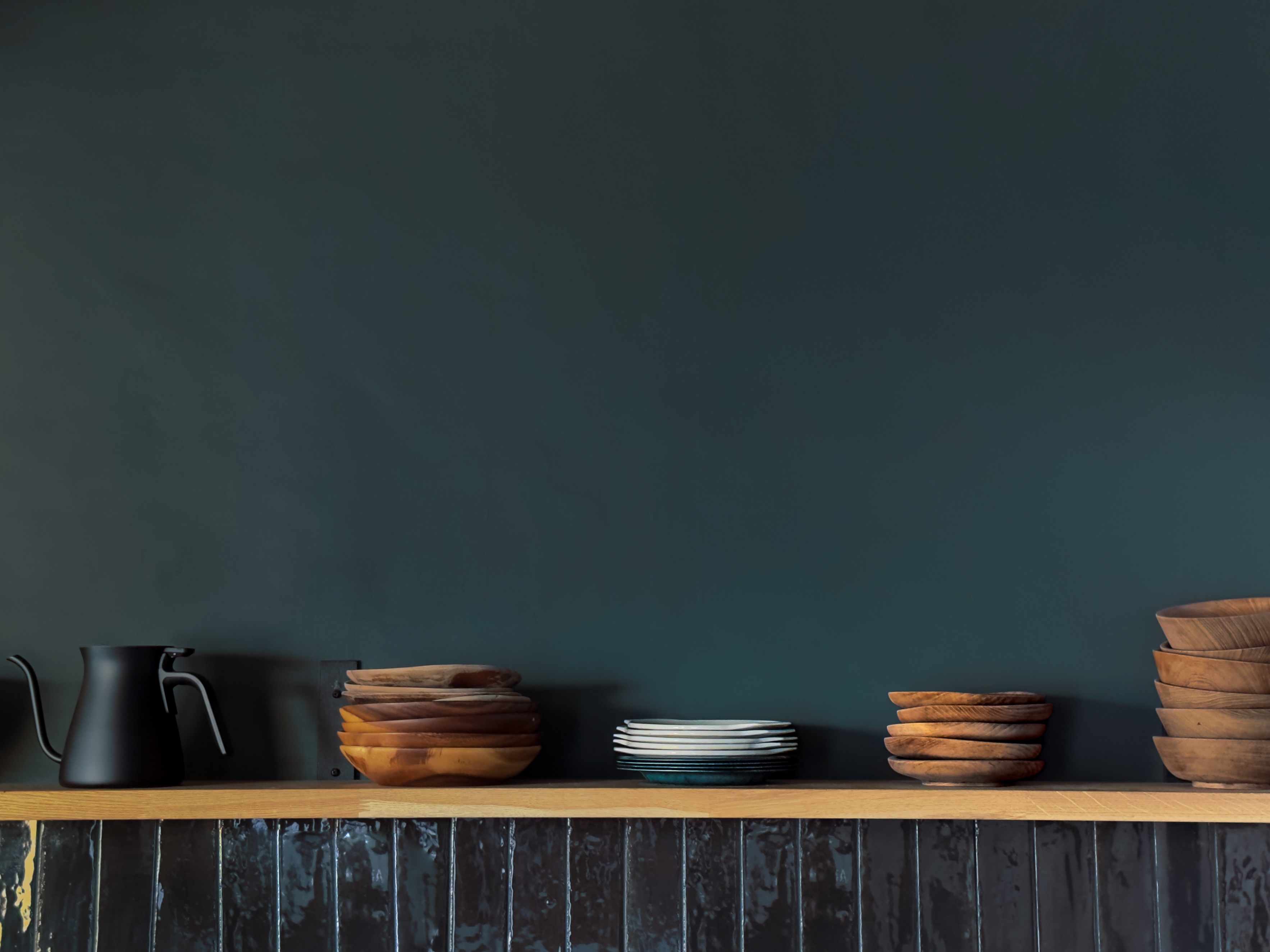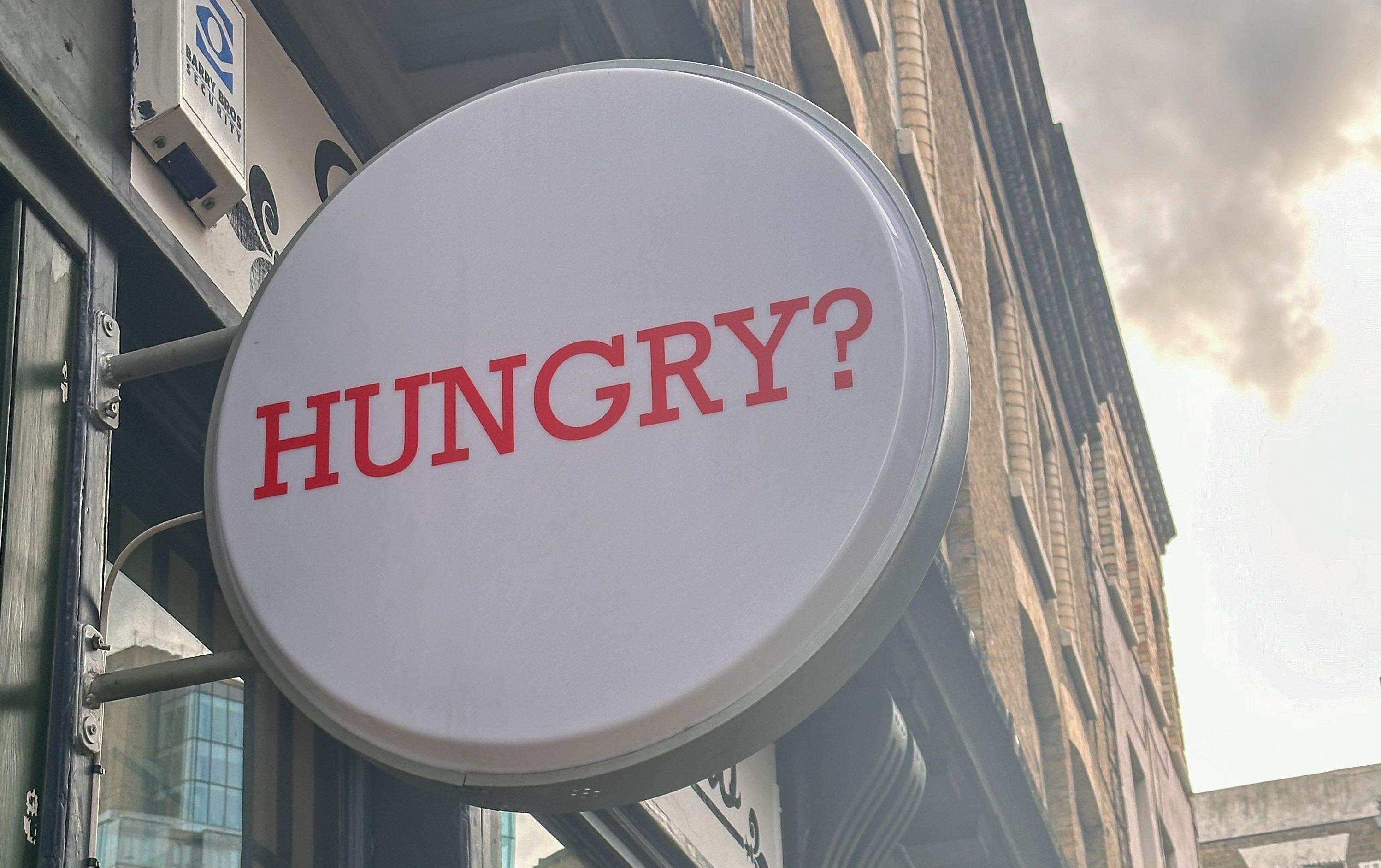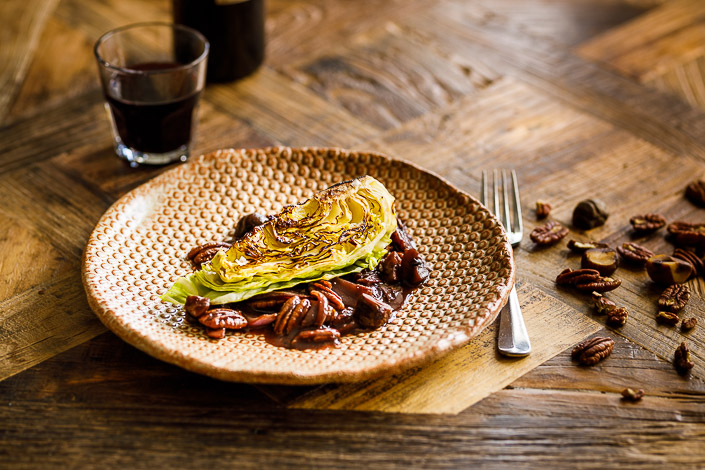Chocolate Day with Rococo's Chantal Coady
Goat’s cheese ganache with gold leaf
Yesterday, Sunday 30th September, we hosted A Chocolate Day with Chantal Coady of Rococo Chocolates in which Chantal guided us through the history of chocolate then taught the fundamentals of working with and appreciating good chocolate, making ganache, the art of chocolate tempering and how to make sublime chocolate truffles.
We learnt so much in one day and I felt humbled that to perfect chocolate making would take years of dedicated practice.
Rococo makes the finest chocolate in the world and its founder Chantal has been a pioneer of the 'nouveau chocolat' revolution for almost 30 years. She opened her first chocolate shop in Kings Road in 1983. I fondly remember pilgrimages to this rather wacky exotic shop that did make the best chocolates, so different from the standard Cadbury fare.
The day started with a fascinated slide show of her involvement with the Grenada Chocolate Company, how they recovered from devastating hurricanes and that now Chantal has her own cocoa farm which is part of a Coop which grows, processes and makes the chocolate on site. She showed us beautiful photographs of where chocolate comes from and how it's processed.
Cacao trees are indigenous to Southern Mexico and Northern South America. An evergreen tree, that grows its flowers and fruit pods directly from the trunk, which looks very peculiar. The flowers are pollinated by midges and the pods are the size of an oval melon and range in colour from yellow to deep red. Each tree has about 30 pods.
Cocoa Pods
The ripe pods are split and the seeds/beans scraped out. These beans are wrapped in a sweet white membrane which Chantal says tastes like lychee - her children loved eating it. The beans, still coated in the membrane, are left to ferment for about 6 days in large compost bins that are rotated to facilitate an even fermentation. The beans are then dried in the sun. When dried they are roasted.
Roasting develops the flavour, reduces the moisture and facilitates removal of the shells. Then, husks are removed, leaving the chocolate nibs which are ground to a thick glossy black liquid - traditionally these would have been ground with a metlapil on a sloping stone “metate”, a very hard and laborious job. Now this is done with a large stone mill machine.
As we moved on to the chocolate lesson, Chantal stressed the importance of starting with the best raw ingredients. Also, use a thermometer probe to take the temperature of the chocolate all through the making process as the correct temperature is crucial.
Chantal taught how to temper chocolate, the method that turns the chocolate glossy, shiny and crisp, using a large slab of cold marble to temper the chocolate on.
Chantal tempering the chocolate
We made:
Tempered Chocolate wafers
Tempered Chocolate decorated wafers
Classic Rococo House Truffles made with Grenada chocolate (71% cocoa solids) broken into pieces, whipping cream, liquid glucose, softened unsalted butter and then rolled in cocoa.
Coffee & Lemon Truffles infused with fresh lemon juice and crushed coffee beans, dipped in tempered chocolate and decorated with cocoa butter coloured transfers.
Coffee & Lemon Truffles
Goat’s cheese ganache with added soft goats cheese - sounds strange but it was my favourite, beautifully adorned with lemon zest and gold leaf.
Goat’s cheese ganache with gold leaf
Salted Caramel Truffles - the saltiness contrasts wonderfully with the sweetness of the chocolate and so trendy now!
Salted caramel truffles
Chocolate dipped candied peel - Helen prepared the orange peel and it was a long job of simmering and draining the peel before adding the sugar. This method of candying makes the peel almost transparent with a gentle flavour.
Chocolate dipped Candied peel
We also used the chocolate to enliven savoury dishes. I like chocolate in Mexican mole, while Chantal showed us how chocolate brings a richness to Mediterranean dishes, including:
Olive chocolate tapenade - we added chocolate to an olive and caper tapenade; the sweetness and richness of the chocolate smoothed out the sour and saltines from the olives and capers.
Citrus-braised fennel with white chocolate - we fried the fennel in butter and white chocolate, until it caramelised, then added fresh orange juice and cooked it down and finished it off in the oven. Delicious.
Chocolate balsamic glaze - we cooked and concentrated balsamic vinegar and added dark chocolate to make a seriously rich decadent salad dressing, which we ate with ripe tomatoes.
All of the recipes come from Chantal’s soon to be published stunning new book, Rococo: Mastering the Art of Chocolate, which you can pre-ordered on Amazon. Due to be published on 8th November, this is an essential cookbook for anyone who loves chocolate, wants to make chocolates at home and wants to use chocolate in new and unusual ways.
Visit Flickr for more photos of the chocolate day.
Thank you, Chantal.

